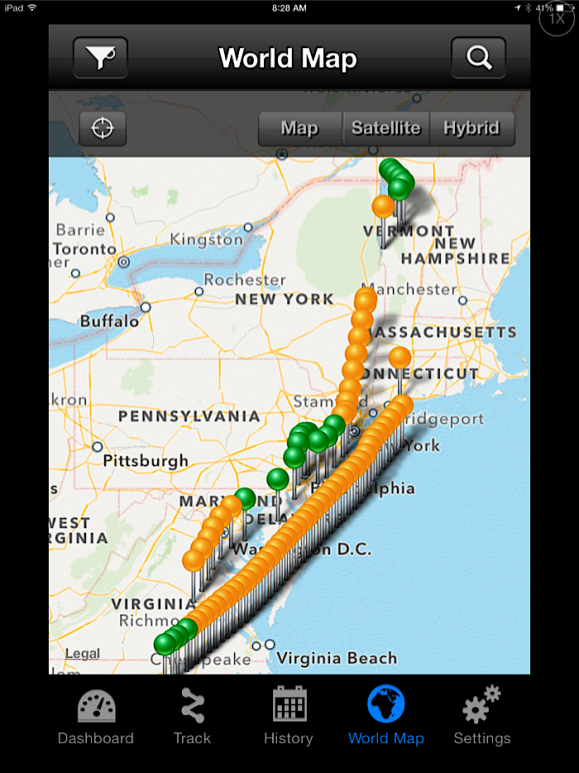Howdy folks! It’s been a long time since I posted any results. I spent a bunch of weeks training in the simulator. The flight simulation may be accurate, but the simulation of radiation at flight altitude was way off! Then I went to work for two weeks but forgot to bring my detector! Then vacation, etc. and the end result is two months with very little data.
Anyway, I do have some results from Christmas vacation flights. Again, like before, these were relatively low altitude flights, and the results were, predictably, low. But, as promised, I’m posting everything, low and high.
The location for these flights was in the Northeast, US.
December 24th 2013
Raleigh-Durham, NC to Philadelphia, PA:
Max radiation at 25,000′ – .96 uSv/Hr
Min radiation at 25,000′ – .92 uSv/Hr
Average radiation at 25,000 – .93uSv/Hr
Philadelphia, PA to Burlington, VT
Max radiation at 25,000’ – 1.35 uSv/Hr
Min radiation at 25,000’ – 1.14 uSv/Hr
Average radiation at 25,000’ – 1.27 uSv/Hr
December 30th 2013
Boston to Raleigh-Durham
Note: Due to turbulence, the flight crew changed altitude a lot in search of smoother air. So I got some data for a few different altitudes, as shown below:
Average radiation at 26,000’ – 1.26 uSv/hr
Average radiation at 24,000’ – 1.26 uSv/hr
Average radiation at 22,000’ – .74 uSv/hr
Average radiation at 20,000’ – .76 uSv/hr

Thank you for taking the time to do this. I was wondering about the air filtration system on the Gulfstream III you pilot. Do you have 100% filtration? Or, does it have a system similar to a commercial airplane which is filtrated circulated air, with 50% coming in unfiltered? This could make a huge difference in your readings. I tried to find information on the web but no luck so far.
Links you might enjoy:
http://rense.com/general96/chartmilisvrt.html
There is no filtration for radiation in any aircraft I know. My meter measures gamma. And gamma rays, among the smallest wavelength measured, goes through just about everything. You need “inches” of lead to shield against it. Other radiation particles, such as Alpha particles, can be deflected by paper or the skin, and are only dangerous if ingested. However, from what I understand, these aren’t prevalent at flight altitudes.
There is a filtration system, however, to guard against ozone. Yes, the Gulfstreams have 100% filtration for that. Many business jets do not. I don’t know about the airliners.
Air is compressed in the jet engines and bled off for aircraft pressurization. So, in any jet aircraft you will be breathing exactly what’s outside the aircraft. The ozone layer begins between 25,000′ and 50,000′ depending on temperature and latitude and stuff. But some say that the compression process, which heats the air to 200+ decrees C, alters most of the ozone back to regular oxygen. I don’t know much more about it, then that.
-James
Thank you for your reply James. I wonder what the level of Alpha and Beta might be? There seems to be many frequent flyers who are getting sick. Some are more predisposed due to exposure in the womb. Not to mention the TSA ionizing radiation scanners that they people through. It all adds up like you said. There are many factors involved for sure route, altitude, possible plume and different isotopes… Just trying to wrap my head around this.